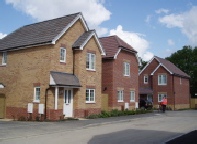Poor Site Managers Small size developments What can be done?
Reasons why new homes are poor quality:
Changes to the Building Regulations and NHBC standards
It is desirable and necessary to improve the standard of the nation’s housing stock and this is done through revision of the building regulations. However, in recent years this has been a continual process. No sooner has the industry accepted new standards, produced designs, specifications and developed new materials enabling the new standards to be met than they are changed again. (Part E Part L Part M) This causes problems at site level with certain trades, possibly working with out of date drawings, unaware that the specifications for their work have now been changed.
Increased importance placed on safety procedures
Nearly all construction and house building companies have invested heavily in implementing new health and safety strategies to comply with new legislation and limit their exposure to prosecution in the event of an accident or fatality. Statistics from the HSE would indicate that safety on construction sites is improving with a reduction in the number of people killed; 59 in 05/06 - down from 71 for both the previous two years. However, compliance has a price and it can take up a large proportion of the site manager’s working day. Not only has he to carry out various and necessary safety inspections but now everything must be recorded in writing, even a visit from the HSE. Such is the onus placed on the site manager preparing and implementing risk assessments, method statements, COSHH assessments, inductions, tool-box talks (training) lift plans etc, that he is spending less and less time out on the site inspecting the standard of your new home as it is built.
Poor site managers
The growing incidence of employing site managers with a trade background also contributes to the lower quality of newly built homes. These site managers tend to have a very limited knowledge outside their own particular trade, with poor management and communication skills and a lack of enthusiasm, confidence and knowledge of the latest techniques and building regulations. It is not uncommon for forklift truck drivers to be acting as site managers on smaller sites.
Lack of continuity
It is becoming rare these days within the house building industry for site managers to have any continuity with their employers. It is often inevitable that as soon as the site is completed, the site manager can find he is either surplus to requirements or is required to travel great distances to his next site. With this as a prospect, it is not surprising that some site managers are not as professional and diligent as they could be.
Reduced size of developments
Owning to ever increasing land prices and lack of availability, the majority of sites are limited to 35 homes or less. This can mean that by the time the site manager and his tradesmen have ‘ironed-out’ all the problems for each new house type and have solutions for the design issues, the site is completed. Finding solutions to design problems can mean quality suffers. As the site team will not be available on site for any length of time it is unlikely they will be called on to deal with any remedial works and this may also result in less care being taken.
What can be done to improve the quality of new homes?
- Employ professionally qualified site managers with a degree or HND as a minimum. Motivate them and give continuity of employment.
- Set realistic build programmes to prevent homes being rushed to meet targets.
- Place more emphasis on profitability and less on the number of completions. This should ensure homes are not rushed to meet end of year deadlines and profitability can be "managed" throughout the year.
- Employ one apprentice for every 100 homes completed and pay at least the minimum wage to attract more people and help the skills shortage.
- Revise and streamline the planning process to prevent delays to the start of developments. Planning gain supplements should be standardised.
- Enable house builders to quickly and easily substitute their own standard home designs for the existing approved designs to reduce the number of one-off developments built.
- Simplify site safety procedures for site management and consider employing Safety officers on site to manage and enforce health and safety matters to free up the site manager to inspect and organise the building work.
- Increase the number of warranty inspectors to ensure all new homes are regularly inspected, not just those sites which are thought to be 'at risk'. Attract professionally qualified and experienced people by providing higher salary levels.
- Revisions to building regulations should be limited to every five years, with the building industry being invited for consultation at every stage of the revision process.
Return to Top









